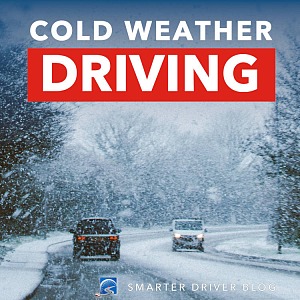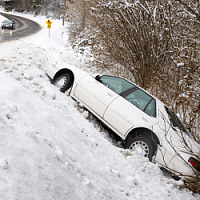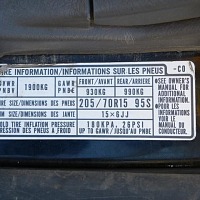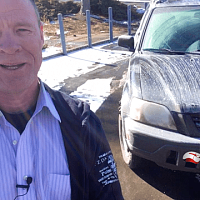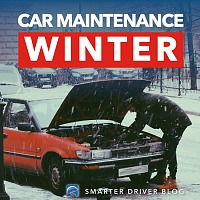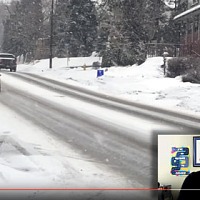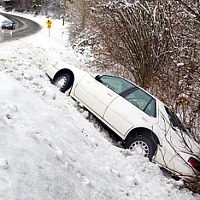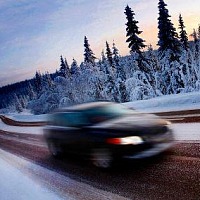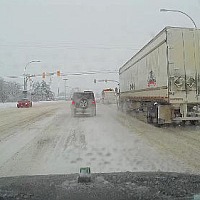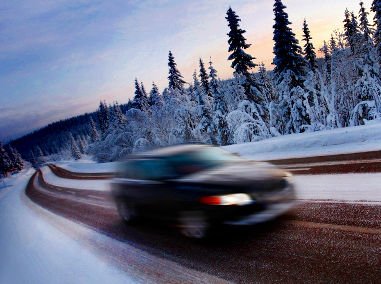Learn how to drive in the winter on snow, ice, and in slippery conditions.
How to Learn to Drive in the Winter on Snow & Ice
Closed Caption
Introduction
Hi there smart drivers.
Rick with Smart Drive Test teaching you how to drive in the snow.
I have three exercises for you today that will help you to learn how to drive in the snow and handle the vehicle when it breaks loose.
Stick around we'll be right back with that information.
[INTRO & MUSIC]
Hi there smart drivers.
Welcome back.
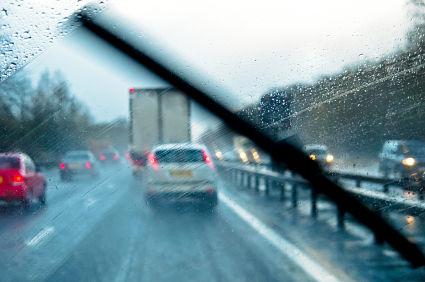
Rick with smart drive test talking to you today about how to learn how to drive in the snow.
And I'll give you three exercises to do to handle the vehicle when it breaks loose in slippery conditions and when it's snowing out on ice and snow.
Now just before we get started here Smart Drive Test helps new drivers be successful in earning a license regardless of class, and helps veteran drivers to remain crash free.
So if you're new here be sure to hit that subscribe button...
just about there [POINTING WITH FINGER].
As well, hit that bell, that way you'll get instant notification when I get the videos up for you.
Here in Vernon, British Columbia, Canada today we've had a good dump of snow.
There's probably about 8 inches (20cm) of snow on the ground--new fresh snow--which makes it pretty slippery.
There's a lot of snow on the roadways as you can see here.
So what I've done is I've gone down to the local rental shop and I've rented some of those 36" inch, one metre tall, pylons and I've just placed them in a cross pattern here in the parking lot.
And I'm just going to show you a few exercises that you can do to just to sort of get used to the vehicle.
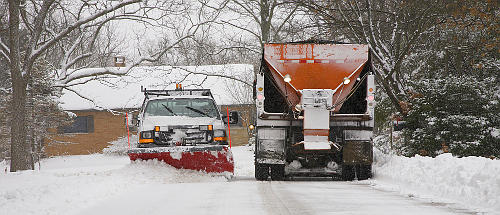 And show you what happens when you over-accelerate, when you over-steer, or when you over- brake on slippery conditions, as it is today in Vernon.
And show you what happens when you over-accelerate, when you over-steer, or when you over- brake on slippery conditions, as it is today in Vernon.
So that you can get used to the vehicle and know what you need to do for lighter touch on the acceleration and the braking and steering.
And know that braking and steering have to be separate actions.
And show you what's going to happen with the brakes when the ABS kicks in on slippery conditions when you're trying to get it stopped.
Maybe you were going a little bit too fast and the ABS kicks in.
Now if the ABS--the anti-lock braking system--does kick in--grinding, shudder, push back on the pedal--all those are normal reactions and the vehicle is going to sort of stutter forward.
And that's all normal on ice and snow because the ABS really quickly kicks in - quite quickly on slippery conditions - on ice and snow.
And know that as well that you're going to experience that.
Braking
And today I'll tell you when that happens during the exercises that we're gonna do here.
So the for first exercise we're just going to try and stop.
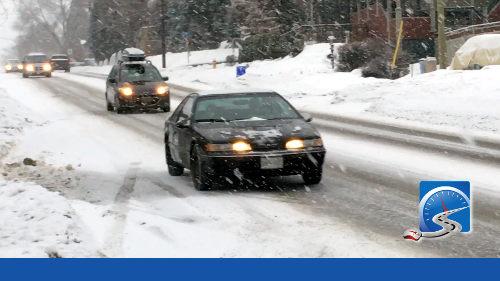
We're gonna race down the parking lot and we're going to try and stop before we hit the pylon.
So that's the first exercise that we're gonna do is braking braking.
That's the first thing you need to do because obviously in the winter time you need to stop.
So you see that I have my vehicle nice and cleared off.
So we're just going to get in line with this pylon here and we're gonna go and drive towards that pylon.
And then you're gonna stop.
You can see in the dashcam there that I barely got stopped.
And you could hear the ABS kicking in.
So...we turned around.
And if you run into the pylon it's not a big deal.
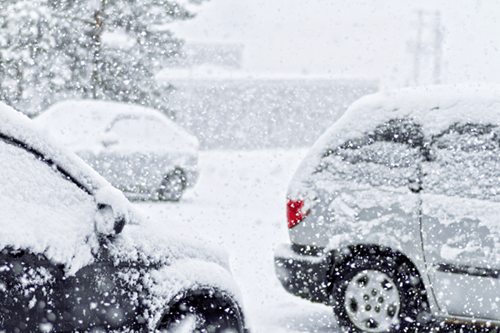
What is going to be a big deal is if you're out on the road and you run into another car.
So what's going to be important is that you leave plenty of space between you and other vehicles on the roadway.
Space Management
One of the the smart drivers on the live feed the other day asked me about that: if their vehicle goes into a skid and they're too close to the other vehicle they're not going to be able to manipulate the controls of the vehicle and they're going to run into the other vehicle.
And exactly!
You need space around your vehicle, otherwise you're not going to have room to maneuver in the event of a skid.
Okay, so we're just gonna back up and just try that a couple of times.
So we drive up towards - we get going here and you can see that on these slippery conditions in the parking lot here almost immediately the ABS brakes engage in the vehicle.

So that's the first thing we're gonna do is just brake.
Now the second thing we're gonna do is, we're gonna accelerate.
You can see that the back end came right around there and I ended up in the snowbank as soon as I accelerated.
So when you go around the pylon here/ I'm in second gear.
Now you can see the other thing, as soon as it starts to spin the backend comes around.
Now I can work that and go around the pylon here.
And the more I accelerate, the more it comes around.
And of course I stalled it.
[RESTARTING THE ENGINE].
So you can do that as well.
And if you leave it in first gear and come around here you can see it spins and the back end is coming around.
And I just leave it, and I've got it spinning out here.
Now you can see that also you can experience understeering.
That's when you have the steering wheel turned and it doesn't turn.
That's the other thing that you can experience.
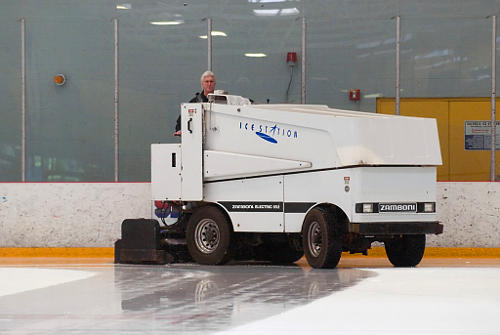
So here you can see the vehicle's just going forward.
I've got the steering wheel cranked all the way, but it's not turning.
And so turning is the second thing.
So over-steering, over-braking, over-accelerating, all those things are going to cause you to go out of control.
Over-Acceleration
So you can see here, the back ends coming around on me and this is what you want to do.
Because you want to feel that in the wintertime; you want to know what its gonna do when you step on the throttle too much.
Now the other thing is, I'm in first gear.
As soon as I change to second gear you increase the amount of torque to the wheels, and it doesn't spin as much.
So you can step down on the throttle harder.
Now for those of you driving automatic transmission vehicles, that's not going to work too much, but for manual transmission drivers you can simply put it into second gear or into third gear and you're going to get more traction.
So that's the second exercise - working the accelerator and accelerating and seeing what happens.
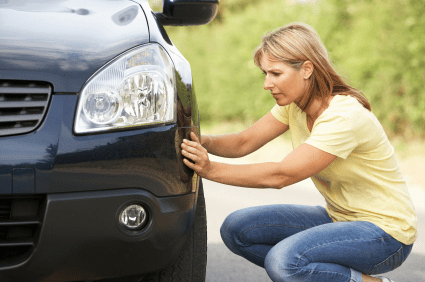
Over-Steering
Now the other thing you want to do, and the third exercise is steering.
You want to come up here and you want to go for a little bit of speed and you want to turn the steering wheel and you want to experience under-steering.
You want to feel like what it feels like when you come up here at speed and you turn the steering wheel and it's still going straight.
You can see it is not turning at all and I've got the steering wheel all the way to the left.
And it is just not steering.
So the last exercise is steering.
So the first exercise is braking, the second exercise is acceleration--over-accelerate--and then the third exercise is to simply brake.
So essentially what you want to do--just going into reverse here--is you want to work the primary controls and you just want to drive around the pylons.

Bonus - The Rockford
Now here's another fun thing that you can do and this is a bonus for you is reverse.
And this is from the television series "The Rockford Files" with James Garner.
So we back up....all the way....brakes...
And I didn't do it as well as he did [CHUCKLING] because I didn't get enough speed to back up and throw the front end around.
It's called a Rockford and it was made famous by "the Rockford Files" because he drove a Pontiac Firebird - it's a Firebird? Yeah I believe it was a Firebird.
Okay so here we go one more time on the Rockford.
Backing up - there we go.
Conclusion
Quick review of learning how to drive in a parking lot with your pylons.
You want to use the primary control.

So the first exercise is braking.
You simply want to drive up to the pylon and see if you can get the vehicle stopped.
So that's the first exercise.
We backup, we get the vehicle stopped.
The second exercise is acceleration.
You want to accelerate the vehicle - you want to feel what the vehicle's like when you put your foot on the throttle and when the tires are spinning.
That's the second exercise.
And then the third exercise is to feel the steering wheel when you got it all the way cranked and it's not doing anything.
The vehicle's not turning.
I've got it all the way to side now.
The other thing...
the bonus to this is skid control.
You can practice skid control in the parking lot in a controlled environment.
And that way, when it happens out on the roadway, it's not gonna be a big surprise to you.
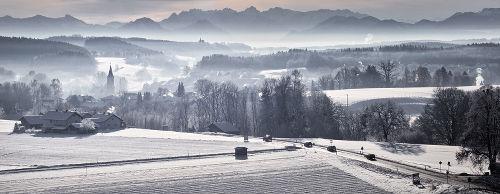
And you're gonna be able to recover the vehicle.
And essentially in most skid control, as soon as you take your foot off the throttle, so you can see here I've got it going - as soon as I take my foot off the throttle the vehicle straightens out.
The problem with most skid control is that most drivers are going far too fast for the conditions of the roadway.
And the reason they lose control is because they're going way too fast and they're not looking where they want to go.
You can see here in some of the rally car images that these people do not give up.
If you do not give up, you've got your seatbelt on, you're held in the seat, and you're looking in the direction that you want to go, and you get your foot off the brake, you get your foot off the throttle, and just work that steering wheel, most of the time you're gonna be able to recover from a skid in the winter time on slippery conditions.
Question for my smart drivers:
Have you had a skid in the winter time on slippery conditions from which you didn't recover?
Leave a comment down in the comment section there.
All of that helps out the new drivers and the veteran drivers alike who are learning how to drive in the winter time.
If you like what you see here share, subscribe, leave a comment down in the comment section.
As well, hit that thumbs up button.
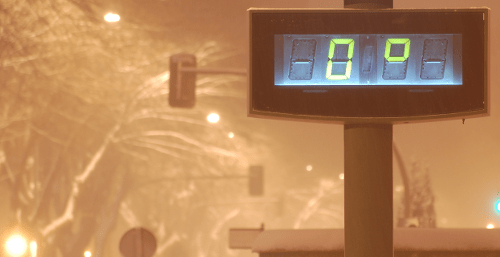
For new drivers, check down in the description there and get your 30% coupon for Pass your road test first time.
It's a course for new drivers to pass a road test first time.
It's guaranteed! If you don't pass within sixty days money-back guarantee.
So look down in the description, get your thirty percent coupon.
As well, look down in description and join our mastermind group and share your information about getting your license.
And share your experiences about being a veteran driver and help others driver to remain crash-free.
I'm Rick with Smart Drive Test.
Thanks very much for watching.
Good luck on your road test.
And remember, pick the best answer not necessarily the right answer.
Have a great day.
Bye now.

